-
 Bitcoin
Bitcoin $108,017.2353
-0.81% -
 Ethereum
Ethereum $2,512.4118
-1.58% -
 Tether USDt
Tether USDt $1.0002
-0.03% -
 XRP
XRP $2.2174
-1.03% -
 BNB
BNB $654.8304
-0.79% -
 Solana
Solana $147.9384
-1.76% -
 USDC
USDC $1.0000
-0.01% -
 TRON
TRON $0.2841
-0.76% -
 Dogecoin
Dogecoin $0.1636
-2.09% -
 Cardano
Cardano $0.5726
-1.72% -
 Hyperliquid
Hyperliquid $39.1934
1.09% -
 Sui
Sui $2.9091
-0.59% -
 Bitcoin Cash
Bitcoin Cash $482.1305
0.00% -
 Chainlink
Chainlink $13.1729
-1.54% -
 UNUS SED LEO
UNUS SED LEO $9.0243
-0.18% -
 Avalanche
Avalanche $17.8018
-1.90% -
 Stellar
Stellar $0.2363
-1.69% -
 Toncoin
Toncoin $2.7388
-3.03% -
 Shiba Inu
Shiba Inu $0.0...01141
-1.71% -
 Litecoin
Litecoin $86.3646
-1.98% -
 Hedera
Hedera $0.1546
-0.80% -
 Monero
Monero $311.8554
-1.96% -
 Dai
Dai $1.0000
-0.01% -
 Polkadot
Polkadot $3.3473
-2.69% -
 Ethena USDe
Ethena USDe $1.0001
-0.01% -
 Bitget Token
Bitget Token $4.3982
-1.56% -
 Uniswap
Uniswap $6.9541
-5.35% -
 Aave
Aave $271.7716
0.96% -
 Pepe
Pepe $0.0...09662
-1.44% -
 Pi
Pi $0.4609
-4.93%
How to use Kraken's trading interface? How can novices get started quickly?
Kraken's trading interface offers a user-friendly experience with features like market, limit, and stop orders, plus advanced options like margin trading and bots for seasoned traders.
Apr 28, 2025 at 02:49 pm
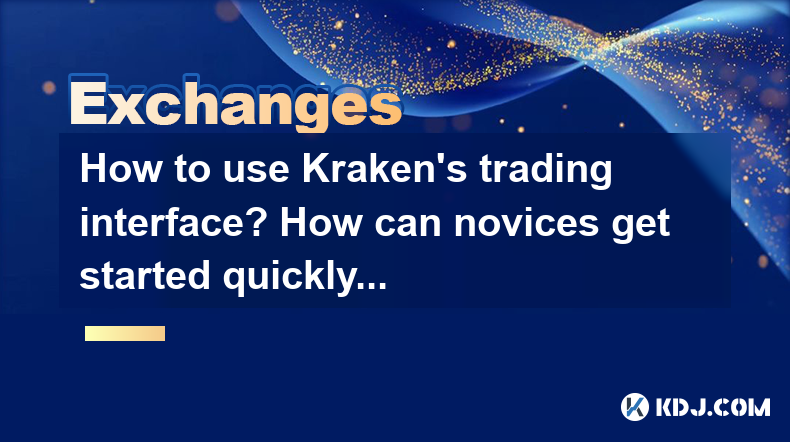
Using Kraken's trading interface can be a seamless experience once you understand its layout and functionalities. This guide will walk you through the essential features of Kraken's trading interface and provide novice users with quick-start tips to get trading efficiently.
Navigating Kraken's Trading Interface
Kraken's trading interface is designed to be user-friendly, yet it offers a robust set of tools for both novice and experienced traders. Upon logging into your Kraken account, you'll be greeted with the main dashboard. Here, you can see an overview of your account balances, recent trades, and market data.
To access the trading interface, click on the "Trade" button located at the top of the page. This will bring you to the trading section where you can select the cryptocurrency pair you wish to trade. Kraken offers a variety of trading pairs, including major cryptocurrencies like Bitcoin (BTC) and Ethereum (ETH) paired with fiat currencies like USD and EUR, as well as crypto-to-crypto pairs.
Once you've selected your trading pair, you'll be presented with the trading chart and order book. The trading chart displays historical price data and can be customized to show different time frames and technical indicators. The order book shows the current buy and sell orders for the selected pair, providing a snapshot of market liquidity.
Placing Orders on Kraken
Kraken allows users to place different types of orders to suit their trading strategies. Here's how to place an order:
- Market Order: This type of order is executed immediately at the best available price. To place a market order, select "Market" from the order type dropdown, enter the amount you wish to buy or sell, and click "Buy" or "Sell."
- Limit Order: A limit order allows you to set a specific price at which you want to buy or sell. Select "Limit" from the order type dropdown, enter the amount and the price, then click "Buy" or "Sell." The order will be executed when the market reaches your specified price.
- Stop Order: A stop order is used to limit losses or protect profits. Select "Stop" from the order type dropdown, enter the amount, the trigger price, and the limit price, then click "Buy" or "Sell." The order will be triggered when the market reaches the specified trigger price.
Using Advanced Trading Features
Kraken offers advanced trading features for users looking to enhance their trading strategies. One such feature is the margin trading option, which allows users to borrow funds to increase their trading position. To use margin trading, you'll need to enable it in your account settings and deposit collateral.
Another advanced feature is trading bots, which can automate trading based on predefined rules. Kraken's trading bots can be set up to execute trades based on market conditions, technical indicators, or other criteria. To use trading bots, navigate to the "Bots" section in the trading interface, configure your bot settings, and activate it.
Quick-Start Tips for Novices
For novice users, getting started on Kraken can seem daunting. Here are some quick-start tips to help you navigate the platform and begin trading:
- Start with a Demo Account: Kraken offers a demo account where you can practice trading without risking real money. This is an excellent way to familiarize yourself with the platform's features and functionalities.
- Begin with Simple Trades: Start by placing market orders for major cryptocurrency pairs like BTC/USD or ETH/USD. This will help you get a feel for how the market moves and how orders are executed.
- Use the Tutorials: Kraken provides comprehensive tutorials and guides on its platform. Take the time to go through these resources to understand the different types of orders and trading strategies.
- Set Realistic Goals: As a novice, it's important to set realistic trading goals and not to overtrade. Start with small amounts and gradually increase your trading volume as you gain more experience.
Managing Your Kraken Account
Effective account management is crucial for a successful trading experience on Kraken. Here are some key aspects to consider:
- Security Settings: Ensure that your account is secured with two-factor authentication (2FA). You can enable 2FA in your account settings under the "Security" tab.
- Funding Your Account: To start trading, you'll need to deposit funds into your Kraken account. Navigate to the "Funding" section, select your preferred deposit method, and follow the instructions to complete the deposit.
- Withdrawing Funds: When you're ready to withdraw your funds, go to the "Funding" section, select the currency you want to withdraw, enter the amount and your withdrawal address, and confirm the transaction.
- Monitoring Your Trades: Keep an eye on your open orders and trade history. You can access these in the "Orders" and "History" sections of the trading interface.
Analyzing Market Data on Kraken
Kraken provides a wealth of market data to help you make informed trading decisions. Here's how to use this data effectively:
- Trading Charts: Use the trading charts to analyze historical price data. You can customize the chart to display different time frames and add technical indicators like moving averages or RSI to help identify trends and potential entry or exit points.
- Order Book and Recent Trades: The order book and recent trades sections provide real-time data on market liquidity and trading activity. Monitor these sections to gauge market sentiment and identify potential trading opportunities.
- Market Overview: The market overview section on the main dashboard provides a quick snapshot of the overall market performance. Use this to stay informed about the broader market trends and how they might impact your trading decisions.
Frequently Asked Questions
Q: Can I trade on Kraken using a mobile device?
A: Yes, Kraken offers a mobile app for both iOS and Android devices. You can download the app from the respective app stores and access the trading interface on your mobile device.
Q: What are the fees for trading on Kraken?
A: Kraken's trading fees vary depending on the trading pair and the type of order. Generally, maker orders have lower fees than taker orders. You can find detailed fee information on Kraken's website under the "Fees" section.
Q: How long does it take to verify my Kraken account?
A: The verification process on Kraken can take anywhere from a few minutes to several days, depending on the volume of verification requests and the completeness of your submitted documents. Ensure that you provide all required information accurately to expedite the process.
Q: Can I use Kraken in my country?
A: Kraken is available in many countries, but there are some restrictions based on local regulations. You can check Kraken's website to see if your country is supported and what services are available in your region.
Disclaimer:info@kdj.com
The information provided is not trading advice. kdj.com does not assume any responsibility for any investments made based on the information provided in this article. Cryptocurrencies are highly volatile and it is highly recommended that you invest with caution after thorough research!
If you believe that the content used on this website infringes your copyright, please contact us immediately (info@kdj.com) and we will delete it promptly.
- Cryptos in July 2025: Massive Gains or Just Hype?
- 2025-07-05 20:30:13
- Pepe's EVM Layer 2 Meme Coin Mania: What's the Hype?
- 2025-07-05 20:50:12
- Shiba Inu, Dogecoin, and the Crypto Skyrocket: What's Making These Memes Soar?
- 2025-07-05 21:10:12
- Tokenized Stocks: Robinhood, Gemini, and the NYSE Threat
- 2025-07-05 21:10:12
- Altcoin Adventures: Navigating the Pepe Fork Frenzy and Solana's Summer Swings
- 2025-07-05 21:15:12
- Hong Kong's Tokenised Bond Leap: Zero Stamp Duty Sparks Web3 Ambitions
- 2025-07-05 20:30:13
Related knowledge
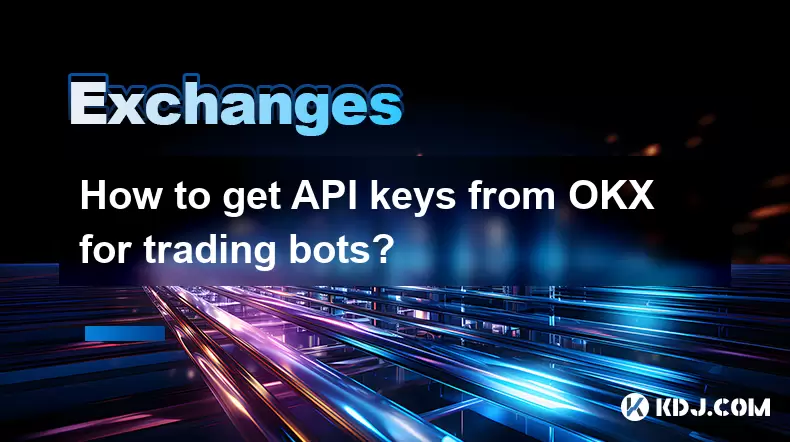
How to get API keys from OKX for trading bots?
Jul 03,2025 at 07:07am
Understanding API Keys on OKXTo interact with the OKX exchange programmatically, especially for building or running trading bots, you need to obtain an API key. An API (Application Programming Interface) key acts as a secure token that allows your bot to communicate with the exchange's servers. On OKX, these keys come with customizable permissions such ...
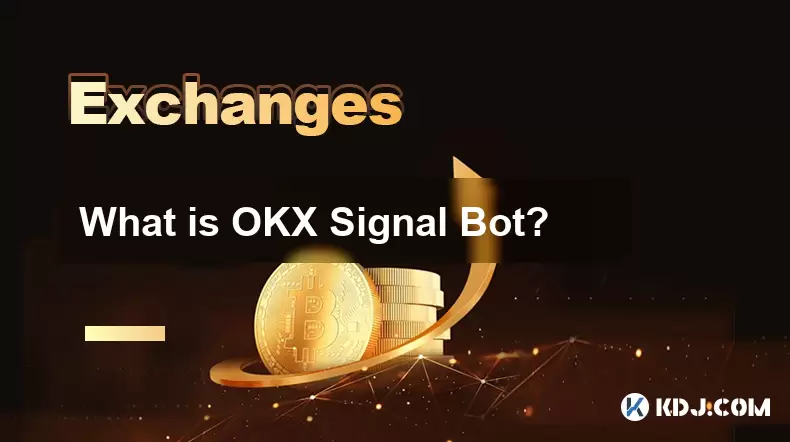
What is OKX Signal Bot?
Jul 02,2025 at 11:01pm
Understanding the Basics of OKX Signal BotThe OKX Signal Bot is a feature within the OKX ecosystem that provides users with automated trading signals and execution capabilities. Designed for both novice and experienced traders, this bot helps identify potential trading opportunities by analyzing market trends, technical indicators, and historical data. ...
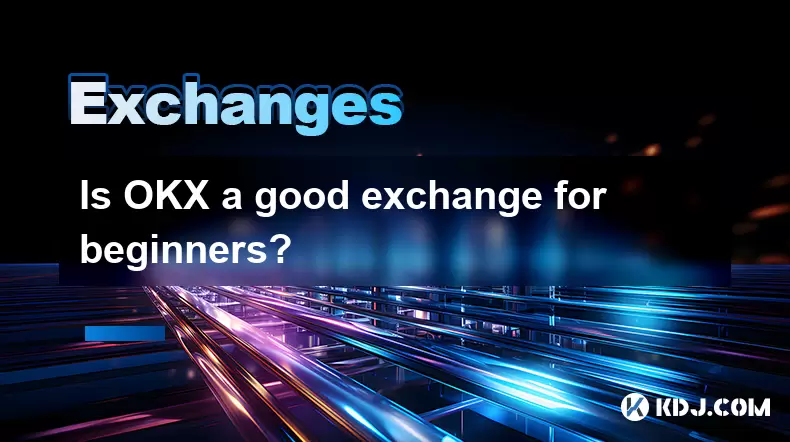
Is OKX a good exchange for beginners?
Jul 03,2025 at 05:00pm
What Is OKX and Why Is It Popular?OKX is one of the leading cryptocurrency exchanges globally, known for its robust trading infrastructure and a wide variety of digital assets available for trading. It supports over 300 cryptocurrencies, including major ones like Bitcoin (BTC), Ethereum (ETH), and Solana (SOL). The platform has gained popularity not onl...
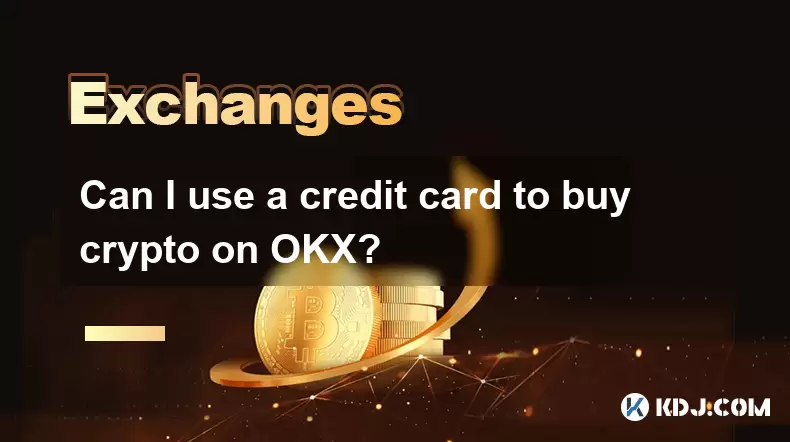
Can I use a credit card to buy crypto on OKX?
Jul 04,2025 at 04:28am
Understanding OKX and Credit Card PaymentsOKX is one of the leading cryptocurrency exchanges globally, offering a wide range of services including spot trading, derivatives, staking, and more. Users often wonder whether they can use a credit card to buy crypto on OKX, especially if they are new to the platform or looking for quick ways to enter the mark...
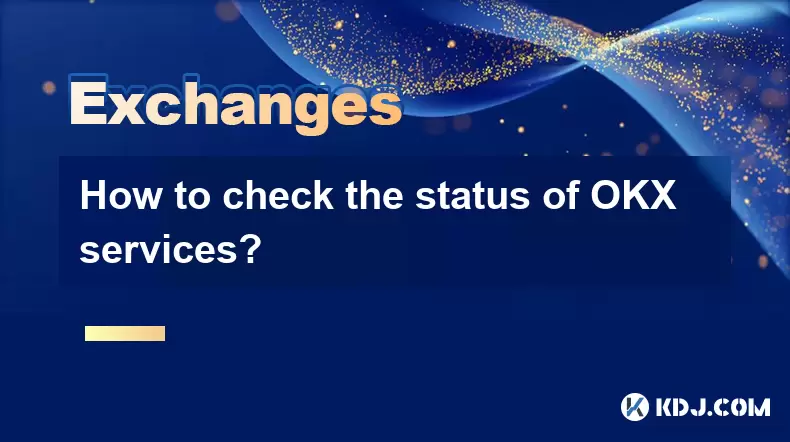
How to check the status of OKX services?
Jul 02,2025 at 11:14pm
What is OKX, and Why Checking Service Status Matters?OKX is one of the world’s leading cryptocurrency exchanges, offering services such as spot trading, futures trading, staking, and more. With millions of users relying on its platform for daily transactions, it's crucial to know how to check the status of OKX services. Downtime or maintenance can affec...
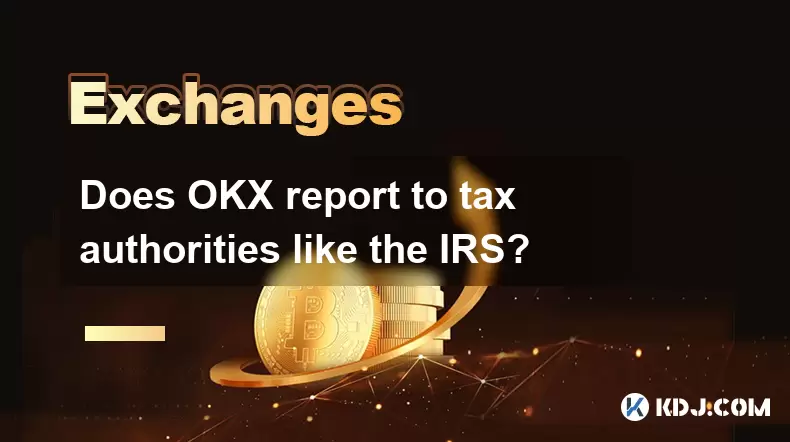
Does OKX report to tax authorities like the IRS?
Jul 03,2025 at 03:14pm
Understanding the Role of Cryptocurrency Exchanges in Tax ReportingCryptocurrency exchanges play a crucial role in facilitating digital asset transactions, but their responsibilities extend beyond trading and custody. As regulatory scrutiny intensifies globally, users are increasingly concerned about whether platforms like OKX report to tax authorities ...

How to get API keys from OKX for trading bots?
Jul 03,2025 at 07:07am
Understanding API Keys on OKXTo interact with the OKX exchange programmatically, especially for building or running trading bots, you need to obtain an API key. An API (Application Programming Interface) key acts as a secure token that allows your bot to communicate with the exchange's servers. On OKX, these keys come with customizable permissions such ...

What is OKX Signal Bot?
Jul 02,2025 at 11:01pm
Understanding the Basics of OKX Signal BotThe OKX Signal Bot is a feature within the OKX ecosystem that provides users with automated trading signals and execution capabilities. Designed for both novice and experienced traders, this bot helps identify potential trading opportunities by analyzing market trends, technical indicators, and historical data. ...

Is OKX a good exchange for beginners?
Jul 03,2025 at 05:00pm
What Is OKX and Why Is It Popular?OKX is one of the leading cryptocurrency exchanges globally, known for its robust trading infrastructure and a wide variety of digital assets available for trading. It supports over 300 cryptocurrencies, including major ones like Bitcoin (BTC), Ethereum (ETH), and Solana (SOL). The platform has gained popularity not onl...

Can I use a credit card to buy crypto on OKX?
Jul 04,2025 at 04:28am
Understanding OKX and Credit Card PaymentsOKX is one of the leading cryptocurrency exchanges globally, offering a wide range of services including spot trading, derivatives, staking, and more. Users often wonder whether they can use a credit card to buy crypto on OKX, especially if they are new to the platform or looking for quick ways to enter the mark...

How to check the status of OKX services?
Jul 02,2025 at 11:14pm
What is OKX, and Why Checking Service Status Matters?OKX is one of the world’s leading cryptocurrency exchanges, offering services such as spot trading, futures trading, staking, and more. With millions of users relying on its platform for daily transactions, it's crucial to know how to check the status of OKX services. Downtime or maintenance can affec...

Does OKX report to tax authorities like the IRS?
Jul 03,2025 at 03:14pm
Understanding the Role of Cryptocurrency Exchanges in Tax ReportingCryptocurrency exchanges play a crucial role in facilitating digital asset transactions, but their responsibilities extend beyond trading and custody. As regulatory scrutiny intensifies globally, users are increasingly concerned about whether platforms like OKX report to tax authorities ...
See all articles

























































































